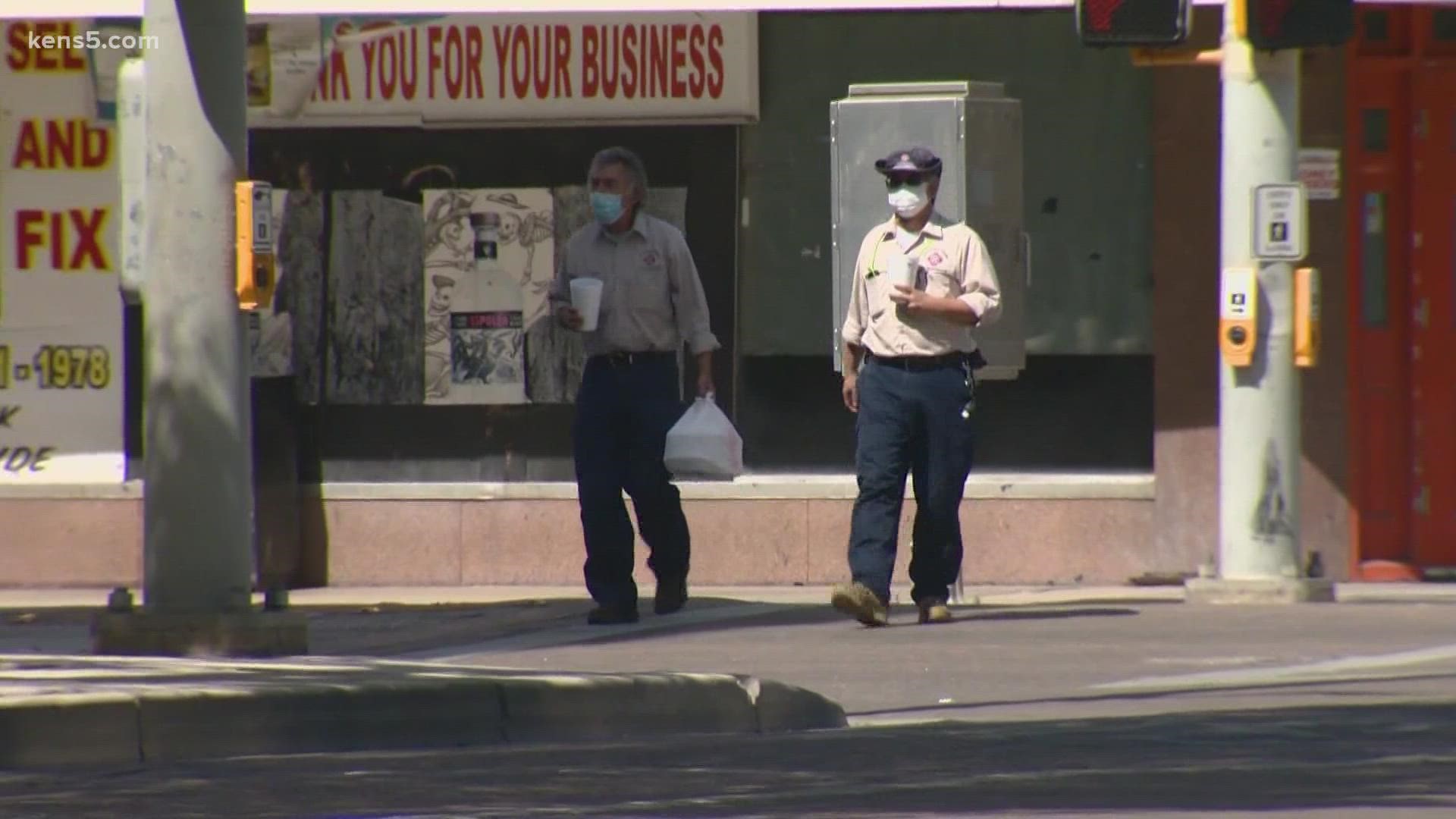SAN ANTONIO — Bexar County's COVID-19 risk level remains in the low threshold this week, but health authorities say conditions are "worsening" as they report a slight uptick in cases.
Metro Health officials tallied 212 new coronavirus infections Tuesday, the highest single-day count since March 1. After an average of 90 and 96 new daily cases were reported in March and April, respectively, the start of May has yielded an average of 157 new daily diagnoses. (That number remains a far cry from the nearly 4,800 new infections seen on a daily basis in January, at the height of the omicron surge.)
More than 541,000 San Antonio-area residents have been diagnosed with COVID-19, while 5,320 residents have died of virus complications. Just three COVID-related deaths have been reported locally in the last month. The seven-day case average jumped to 173 on Tuesday, up from 156 the day prior.
The local positivity rate also continues to rise. It stand at 6.4%, up from 5.2% last week.
Hospitalizations, however, went down on Tuesday. There were 64 COVID-19 patients receiving treatment for their symptoms at local facilities, down four from Monday. The number has fluctuated between 50 and 72 over the last month. Of those 64 patients, 19 were in intensive care and 11 were using ventilators.
Vaccine Progress in Bexar County
The following numbers are provided by San Antonio Metro Health. A full breakdown can be found here.
- 1.447 million eligible Bexar County residents are fully vaccinated as of Monday, May 2.
- More than 513,000 eligible Bexar County residents have received their COVID-19 booster shot, as of Monday, May 2.
The CDC states that "when a high percentage of the community is immune to a disease (through vaccination and/or prior illness)," that community will have reached herd immunity, "making the spread of this disease from person to person unlikely."
The City of San Antonio breaks down the vaccination rates by zip code on Metro Health's Vaccination Statistics page.
Coronavirus in Texas
The total number of coronavirus cases in the state since the pandemic began grew by 2,885 on Tuesday, according to the Texas Department of State Health Services. That total includes 1,983 new confirmed cases and 902 new probable cases. More details can be found on this page.
Tuesday's figures bring the total number of Texans diagnosed with COVID-19 to more than 6.767 million.
An additional 12 Texans have died from virus complications, meanwhile, raising the statewide death toll to 86,646.
Coronavirus symptoms
The symptoms of coronavirus can be similar to the flu or a bad cold. Symptoms include fever or chills, cough, shortness of breath or difficulty breathing, fatigue, muscle or body aches, headache, new loss of taste or smell sore throat, congestion or runny nose, nausea or vomiting, and diarrhea, according to the Centers for Disease Control.
Most healthy people will have mild symptoms. A study of more than 72,000 patients by the Centers for Disease Control in China showed 80 percent of the cases there were mild.
But infections can cause pneumonia, severe acute respiratory syndrome, kidney failure, and even death, according to the World Health Organization. Older people with underlying health conditions are most at risk.
Experts determined there was consistent evidence these conditions increase a person's risk, regardless of age:
- Chronic kidney disease
- COPD (chronic obstructive pulmonary disease)
- Obesity (BMI of 30 or higher)
- Immunocompromised state (weakened immune system) from solid organ transplant
- Serious heart conditions, such as heart failure, coronary artery disease, or cardiomyopathies
- Sickle cell disease
- Type 2 diabetes
- The CDC believes symptoms may appear anywhere from two to 14 days after being exposed.
Human coronaviruses are usually spread...
- Between people who are in close contact with one another (within about 6 feet).
- Through respiratory droplets produced when an infected person coughs, sneezes or talks. These droplets can land in the mouths or noses of people who are nearby or possibly be inhaled into the lungs.
- Some recent studies have suggested that COVID-19 may be spread by people who are not showing symptoms.
Help stop the spread of coronavirus
- Stay home when you are sick.
- Eat and sleep separately from your family members
- Use different utensils and dishes
- Cover your cough or sneeze with your arm, not your hand.
- If you use a tissue, throw it in the trash.
Find a Testing Location
City officials recommend getting a COVID-19 test if you experience fever or chills, cough, shortness of breath or difficulty breathing, fatigue, muscle or body aches, headache, new loss of taste or smell, sore throat, congestion or runny nose, nausea or vomiting, or diarrhea.
Here's a Testing Sites Locator to help you find the testing location closest to you in San Antonio.
Latest Coronavirus Headlines
- Vaccine developer hid quality control problems from FDA, House report concludes
- Shanghai re-tightens on COVID, frustrating trapped residents
- 'It’s just a matter of time' | Health experts warn of future COVID care denial for uninsured
- Two new omicron subvariants have emerged. Should you be concerned? | Wear the Gown
- UT Austin researchers resume testing wastewater for COVID-19
- Root cause of long COVID found, study says
- WHO issues new report estimating full COVID-19 death toll
- Should you still wear a mask on planes, trains? What CDC says now.

